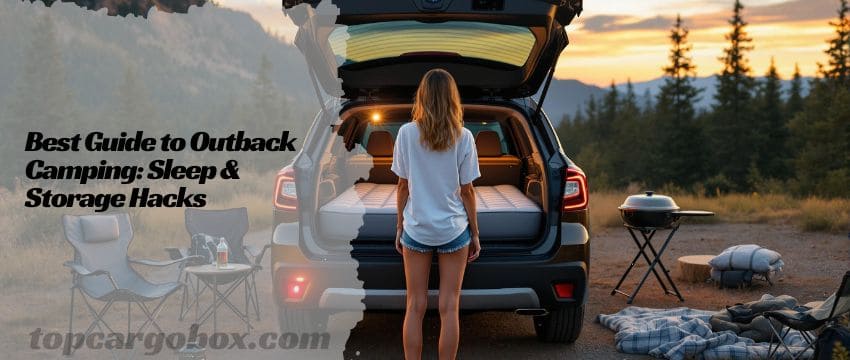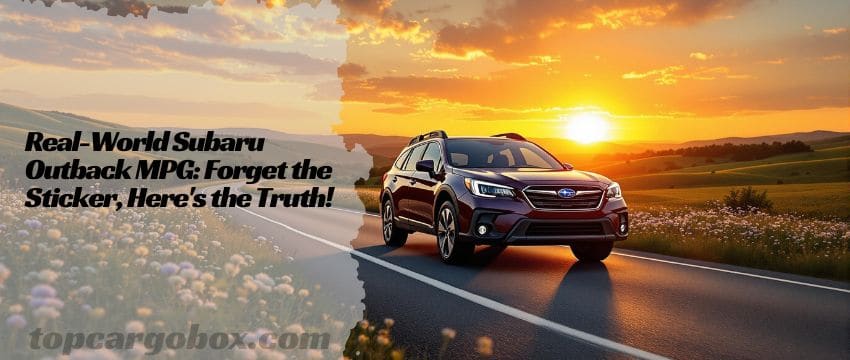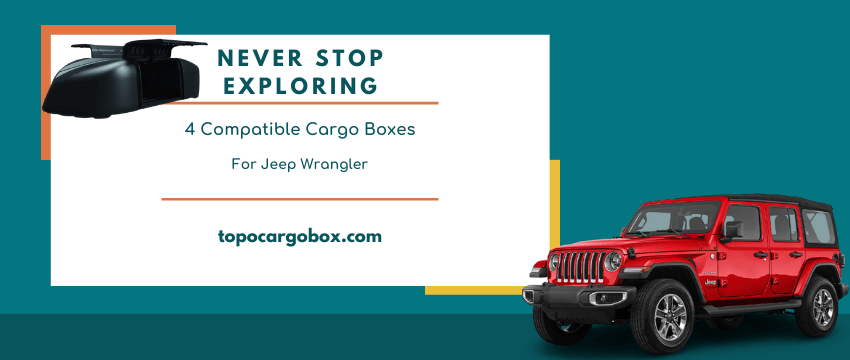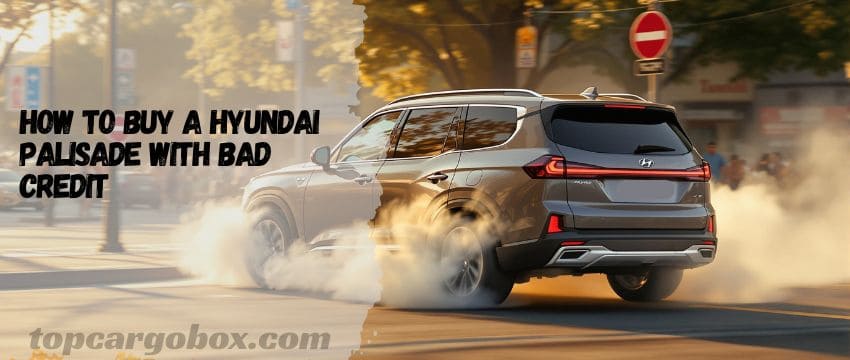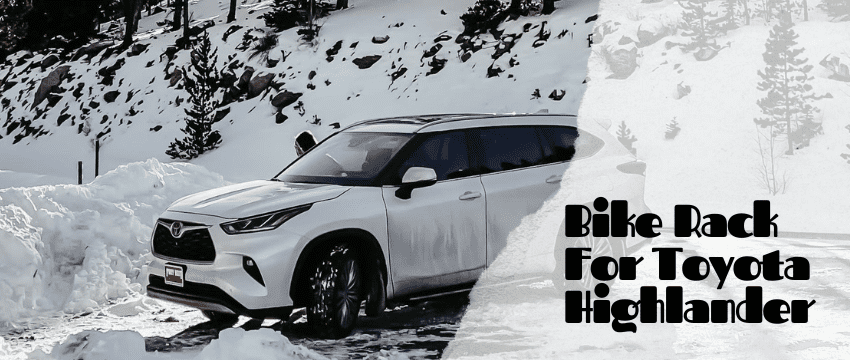What’s up, road tripper? Seriously, how many times have you been cruising down the interstate, trying to enjoy your favorite podcast or have a decent conversation, only to be constantly battling that noise? You know the one – the intrusive drone, the whistle, the rumble that just won’t quit. It’s the absolute worst, right? If you’re eyeing the Hyundai Palisade or already own one, understanding its cabin noise performance, especially at that magic 70 MPH highway cruising speed, is legit crucial. Let’s dive deep into what makes this big SUV tick (or not tick!) acoustically. Forget generic specs; we’re talking real-world quietness here. Is it a serene sanctuary or a noisy nuisance when the rubber meets the road?
The Quest for Serenity: Why Cabin Noise Matters More Than You Think

How’s it going? Honestly, cabin noise isn’t just some minor annoyance you should brush off. Think about it: long drives, cranky kids, important phone calls on the go – constant noise pollution absolutely sucks the joy out of driving. It ramps up fatigue big time, making you feel wiped out way before you reach your destination. Who needs that extra stress? Plus, constantly cranking up the stereo to drown out road roar? That’s no solution at all. A truly quiet cabin feels premium, luxurious even, turning every journey into a more relaxing experience. For families or anyone logging serious miles, it’s often near the top of the “must-have” list. Feeling that peace behind the wheel? Totally priceless.
Unpacking the Palisade’s Soundproofing Arsenal
Okay, so Hyundai wasn’t messing around when they designed the Palisade. They threw a whole toolbox of tech at keeping things hush-hush inside. Off the top of my head, here’s the lowdown on what’s working behind the scenes:
- Layers Upon Layers: Dude, the amount of sound-deadening material packed into the floors, doors, and roof is seriously impressive. We’re talking thick absorbers and dense barriers specifically chosen to block and soak up vibrations before they ever reach your ears. It’s like wrapping the cabin in a cozy acoustic blanket.
- Sealed Up Tight: Wind noise loves finding tiny gaps. Hyundai engineers obsessed over sealing every possible leak point around the doors, windows, and even the body seams. Premium acoustic laminated glass for the windshield and front windows? Absolutely! This stuff acts like a noise-canceling barrier against wind whoosh. Check out how this focus on sealing impacts long-term ownership satisfaction.
- Tuning the Air Flow: Believe it or not, how air flows under and around the Palisade plays a massive role. Extensive time in the wind tunnel helped sculpt the body to minimize turbulent air that causes buffeting and whistling noises. It’s not just about looking sleek; it’s about sounding smooth too.
- Engine Isolation Mastery: Even smooth engines grunt a bit. Hyundai uses fancy hydraulic engine mounts and carefully tuned intake/exhaust systems to isolate engine vibrations and muffle harsh sounds before they invade the cabin. No one wants to feel like they’re sitting on the engine block!
The Tire Talk: Your Rubber Makes a HUGE Difference
For real? Yes! The tires fitted to your Palisade are arguably the single biggest factor you can actually control regarding road noise. Think of them as the literal point of contact. OEM tires vary wildly. Some trims come with quieter, touring-focused rubber, while others might get all-terrain or sportier tires that inherently produce more roar. If you’re noticing excessive noise, swapping to a premium touring tire designed for low noise (look for sound wave patterns or foam lining inside!) can transform the experience. It’s a legit upgrade worth every penny for quiet seekers. Don’t underestimate the power of the right tread!
Conquering the Wind: 70 MPH is the Real Test
Alright, let’s get down to brass tacks. 70 MPH is where many vehicles start to show their true (noisy) colors. So, how does the big Palisade hold up? Honestly, pretty darn well overall, especially considering its size and boxy shape (which usually equals more wind noise). That wind tunnel work pays off. While zero wind noise is impossible, the Palisade keeps it impressively subdued. You might detect a faint whisper around the large side mirrors – pretty common on big SUVs – but it’s rarely intrusive or whistle-y. Compared to many rivals, it feels noticeably more isolated from the rushing air outside. It’s definitely one of its strong suits. Feeling good about that highway serenity yet?
The Engine Note: Smooth Operator or Grumbly Distraction?
Under the hood, you’ve usually got a 3.8-liter V6 doing the grunt work. The good news? It’s generally a smooth and refined powerplant. When you stomp on the gas for a quick pass, sure, you’ll hear it rev up – but it’s a relatively muted, distant growl rather than a harsh, grating scream. Cruising steadily at 70 MPH, with the 8-speed automatic transmission usually loafing along in a high gear, the engine fades way into the background. Seriously, you often have to glance at the tach to see if it’s even running. Major points for refinement here. No one wants a constant droning companion on a road trip.
Road Surface Roulette: It’s Not Always the Car’s Fault
Here’s the real kicker: the Palisade can feel library-quiet one minute and surprisingly loud the next, and often, it’s not the SUV’s fault. Road surface texture is a massive player. Fresh, smooth asphalt equals bliss. Older, coarser concrete, especially those grooved highways? That’s gonna transmit significantly more tire roar up into the cabin, no matter what you’re driving. The Palisade’s soundproofing does a solid job of taking the edge off, but physics is physics – some surfaces are just loud. It’s what it is. Ever notice how noise levels change dramatically between road sections? Yep, that’s why.
Putting Numbers to the Noise: The Decibel Deep Dive
Okay, let’s geek out for a sec. How quiet is “quiet”? Measured at a steady 70 MPH on reasonably smooth pavement, the Palisade typically registers cabin noise levels around 64 to 67 decibels (dB). What does that mean? For context:
- Normal conversation: 60-65 dB
- Background music: ~70 dB
- Vacuum cleaner: ~75 dB
These numbers place the Palisade firmly among the quieter three-row SUVs on the market. While luxury brands might eke out one or two dB less (which is noticeable but not earth-shattering), the Palisade punches way above its price point in acoustic comfort. That’s awesome value!
How Does It Stack Up? Palisade vs. The Quiet Competition
So, is the Palisade the undisputed king of quiet? It’s definitely a top contender in its class. Compared to mainstream rivals like the Toyota Highlander, Honda Pilot, or Kia Telluride (its corporate cousin), the Palisade often has a slight edge or is right on par in noise suppression. Where you might notice a difference is against luxury offerings like the Audi Q7, Mercedes GLS, or Genesis GV80. These premium machines invest even more heavily in exotic sound-deadening materials and engineering, potentially offering that last layer of near-silence – but you pay a hefty premium for it. For the money? The Palisade delivers exceptional quietness. Wondering how depreciation affects that value proposition over time? It’s worth a look.
Hyundai’s Secret Weapon: “Quiet Mode” Explained
Hold up, did you know many newer Palisades (especially higher trims) have a trick up their sleeve? Hyundai’s “Quiet Mode” is part of their infotainment settings. What’s it do? Essentially, it prioritizes cabin serenity by automatically adjusting the audio system. When activated, the system uses microphones to monitor incoming low-frequency road and engine noise. It then cleverly counteracts these frequencies by playing opposing sound waves through the speakers – like active noise cancellation headphones for your whole cabin! It’s subtle but effective, especially for neutralizing persistent droning sounds. It’s not magic, but it’s a cool tech boost. Learn more about which trims offer the best features for the money.

Beyond the Test Drive: Listening Like a Pro
Planning a test drive? Awesome! Don’t just listen to the sales pitch; focus your ears strategically. Here’s your cheat sheet:
- Find the Right Road: Beg, borrow, or plead to get the Palisade onto a highway where you can safely hold 70 MPH for a few minutes. Surface streets won’t cut it for this test. Come on, insist on it!
- Kill the Tunes: Turn the radio and climate control OFF completely. Yeah, it might feel awkward, but you need to hear the raw cabin sounds.
- Listen for Layers: Pay attention to different noise types. Is it a deep rumble (tires/road)? A rushing whoosh (wind)? A whine or drone (engine/transmission)? Identifying the source matters.
- Bring Your Crew: If possible, take along your usual passengers. More weight can slightly change suspension noise, and chatting helps gauge how easily conversation flows. Is everyone yelling? Bummer.
- Compare Back-to-Back: If dealer stock allows, drive different Palisade trims (tires!) and maybe a key competitor immediately after. Perception is relative! Thinking about buying used or CPO? Listen even more critically.
The Palisade Cabin Noise Verdict: Peace Found?
So, after all this, what’s the final word? Is the Hyundai Palisade quiet at 70 MPH? Absolutely, yes! For its segment and price point, it delivers an impressively serene and refined highway cruising experience. Hyundai’s comprehensive approach to sound deadening, aerodynamic sealing, and engine refinement clearly pays off. While no vehicle is utterly silent, and road surfaces or aggressive tires can intrude, the Palisade minimizes disturbances remarkably well. Wind noise is well-controlled, the V6 stays hushed while cruising, and road noise is generally well-muffled. Factor in the available Quiet Mode tech on higher trims, and you’ve got a three-row family hauler that genuinely prioritizes your peace of mind. It’s a major reason why owners love them for long hauls. Seriously considering one? Our Complete CPO Buying Guide can help you score a quiet deal.
Your Palisade Buying & Ownership Sound Advice
Feeling good about the Palisade’s quiet credentials? Totally fair! Here’s how to maximize that serenity:
- Tire Choice is Key: If buying new, discuss OEM tire options for quietness. If replacing tires later, invest in premium low-noise touring tires. It’s the best acoustic upgrade you can make.
- Trim Level Wisdom: Higher trims (Calligraphy, especially) often get the acoustic laminated glass and Quiet Mode as standard. If silence is golden, it might be worth the splurge. Check out the best trim for the money breakdown.
- Pre-Owned Perks: Looking at used Palisades? Listen EXTRA carefully on your test drive at 70 MPH. Check tire wear and brand (worn or cheap tires = noise). Inspect door/window seals for damage. Our guides on buying used vs. new and spotting demo models are super helpful.
- Seal the Deal (Literally): Over time, door seals can degrade. Keep them clean and lightly conditioned to maintain their effectiveness against wind noise. Simple maintenance goes a long way.
- Beware the Fee Fade: Negotiating? Don’t let excessive dealer fees eat into your budget for that quieter, higher-trim model. Fight the fluff! And if buying out-of-state, factor in all potential extra costs.
Wrapping Up: Turn Down the Volume on Your Drive
Let’s be real: life is noisy enough. Your daily drive shouldn’t add to the cacophony. The Hyundai Palisade gets it. Through smart engineering, quality materials, and thoughtful features like Quiet Mode, it delivers a cabin environment at 70 MPH that’s genuinely calm and conversation-friendly. While absolute silence is a fantasy, the Palisade comes impressively close, especially when you consider the value it packs. If you’re craving a spacious, comfortable, and quiet escape pod for your family adventures, the Palisade absolutely deserves a top spot on your test-drive list. Hit the highway, turn off the radio, and experience the hush for yourself. You might just be pleasantly surprised. Catch you later on the quiet road!
Your Hyundai Palisade Noise Questions Answered
1. Is the Hyundai Palisade a quiet ride?
So, is the Hyundai Palisade actually quiet inside, especially when you’re flying down the highway? For real, let’s cut to the chase: you know that awful drone that makes you crank up the radio just to hear yourself think in some SUVs? Nice try, but that’s not really a solution. Here’s the good news: folks who drive the Palisade constantly rave about how peaceful it is, even when you’re cruising right at 70 MPH. How do they pull that off in a big, three-row family hauler without charging luxury bucks? It’s not magic, but it is smart. Hyundai basically threw a massive acoustic blanket over the whole cabin – we’re talking serious sound-sucking stuff packed into the doors, floor, and roof. Then they added special laminated glass up front (on fancier trims) that acts like a noise shield, plus they sealed up every little crack where wind loves to whistle through.
Under the hood, that V6 is smooth and tucked away nicely so its grunt doesn’t invade your space. Sure, if the road surface is super rough or the tires are noisy, you’ll hear something – physics kinda sucks like that sometimes. But here’s the kicker: the Palisade’s core design is legit focused on shutting out the racket. Wind noise? Barely a bother. Road rumble? Muted big time. Engine buzz when you’re just cruising? Forget about it. Honestly, for what you pay, it punches way above its weight in making your drive feel calm and collected. Imagine actually enjoying the quiet or having a normal conversation on your next road trip without yelling? Yeah, you’ll totally notice the difference when the miles start adding up.
2. What are the biggest complaints with Hyundai Palisade?
Absolutely, let’s get real about the Palisade’s quirks – because hey, no SUV walks on water, right? Off the top of my head, while most owners aren’t losing sleep over cabin racket, you might find that V6 engine gets a bit thirsty at the pump, especially stacked against some newer turbocharged rivals sipping fuel more efficiently; imagine watching the gauge dip faster than you’d like on a long haul, that kinda sucks. A handful of drivers mention catching a faint whistle or rush of wind sneaking past those big side mirrors when you’re really pushing it on the interstate, though honestly, it’s usually less obnoxious than what you’d hear in many competitors – nice try, wind, but you’re not totally winning here.
Early on, some folks wrestled with the infotainment system feeling sluggish or acting quirky, like it needed an extra coffee, but fair enough, software updates have smoothed out a lot of those initial hiccups. And yeah, it’s a modern machine packed with tech, so occasionally you might get a random sensor warning light popping up like an uninvited guest – nothing major usually, but it can make you mutter “give me a break” under your breath. Let’s not forget the sheer size: parallel parking this beauty in a cramped downtown spot? Legit stressful sometimes, feeling like you’re maneuvering a small apartment building. It’s a big vehicle, period. How do you feel about wrestling with tight spaces? Still, the vibe from owners after a year is overwhelmingly positive – seems the good stuff far outweighs these niggles for most folks hitting the road daily.
3. What is the interior volume of the Hyundai Palisade?
Dude, it’s seriously spacious! The Palisade is built for hauling people and their stuff in comfort. Total passenger volume clocks in at a generous ~ 154 cubic feet across its three rows. Cargo space is equally impressive: you get about 18 cubic feet behind the raised third row – enough for several suitcases or a big grocery run. Fold that third row down, and it jumps to a massive ~46 cubic feet. Need maximum cargo? Fold both the second and third rows, and you’re looking at a cavernous ~86 cubic feet of space. It’s one of the roomiest in its class, making it awesome for families and gear. Check out how interior space factors into depreciation.
4. What is quiet mode Palisade?
Quiet Mode is a super cool tech feature available on higher Palisade trims (like the Calligraphy). Think of it like active noise cancellation for your entire cabin! It uses microphones strategically placed inside the car to constantly listen for low-frequency droning sounds – think tire roar or engine hum on the highway. The system then generates opposing sound waves through the vehicle’s speakers to literally cancel out those annoying frequencies. It’s not going to eliminate all noise (like sudden bumps or wind gusts), but it does a legit impressive job of reducing that constant background drone, making the cabin feel even more serene, especially during long cruises. It’s a neat party trick that actually works.
5. What is quiet mode in Hyundai?
“Quiet Mode” in Hyundais (like the Palisade, Sonata, Santa Fe, etc.) refers specifically to their Active Noise Control (ANC) system. This technology uses the car’s audio system as a weapon against noise. Microphones pick up low-frequency booming sounds inside the cabin (mainly from the road and engine). The onboard computer analyzes this noise in real-time and instructs the speakers to emit sound waves that are the exact opposite (anti-phase). When these opposing waves meet, they cancel each other out, significantly reducing the perceived volume of that intrusive drone. It’s essentially science magic working silently to make your drive noticeably quieter without you having to do a thing. Pretty awesome, right? Learn how features like this affect long-term value.
Our team is creating outdoor-gear relevant articles with passion. If our articles can help you to find the correct solutions for your questions, we will be happy about that. In the content creation process, we usually collect accurate and useful information online or offline to compile our content in an organized way. Consequently, we can guarantee that you can discover some expected answers to your questions. We appreciate your time on our site.


